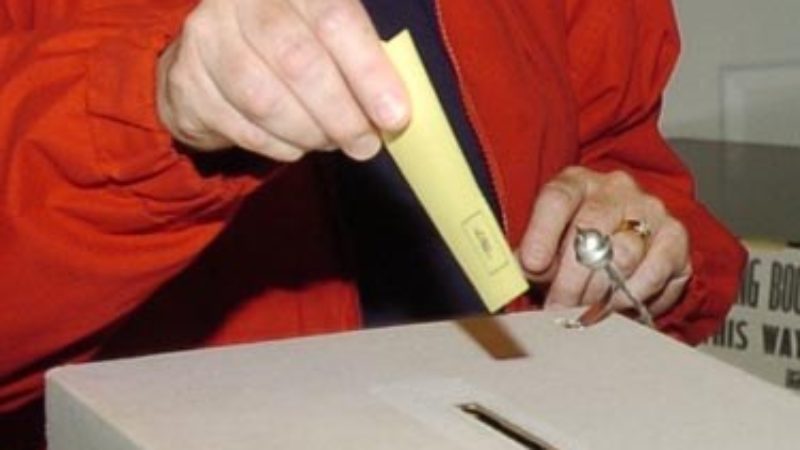
My friend Hopi Sen wrote one of his thoughtful analyses of Labour’s current position last week. He correctly identified two “bad ideas” – “the core vote fallacy” and the “imaginary progressive consensus”. The first is that Labour’s core vote is imagined to be bigger than it actually is, and that Labour activists don’t realise our core vote’s views are to the right of those of Labour activists. The second is that we fondly imagine there is a leftwing consensus in the UK that only fails to show through because we have multiple progressive parties and a First-Past-the-Post voting system – Hopi correctly points out the public are on the left on certain issues like the NHS, schools and rail renationalisation but on the right on others like tax, immigration, crime and welfare.

Where I part company with Hopi is in his attack on what he calls the “40% Fantasy”, the 40% strategy advocated by the field director of Ed Miliband’s leadership campaign Marcus Roberts. He correctly says that the two key pillars of reaching 40%, Labour’s 2010 voters and the post-coalition switchers from the Lib Dems, have turned out to be weaker than expected. What he ignores is that no one actually tried to implement the 40% strategy – except perhaps Marcus himself in Southampton Itchen where he is heavily involved in the campaign. It didn’t end up being the Labour Party’s official strategy, which was predicated on a more pessimistic and narrower coalition of basically the two (now weakened) pillars of the 2010 supporters and the ex-Lib Dems. This was supposed to add up to 35% but the rise of UKIP means it is now delivering about 31%. It wasn’t that the 40% strategy was implemented badly, it was rejected.
I don’t think Marcus was fantasising about Labour getting 40%. He was setting an ambitious target for what a popular and mainstream social democratic party ought to be aiming to get in General Elections, then working back from that to see who you needed to reach out to to reach it.
I don’t think the time has come to give up on an objective of a Labour Party that has the support of 4 in 10 of voters. We are supposed to be the political voice of working people in the UK – do we think that they constitute only 31% of voters? We often self-describe as the “people’s party” – not the “not very many people’s party”.
If we are on 31% it isn’t that there is a problem with the voters, it’s that there is a problem with our ability to appeal to them.
This isn’t an intrinsic problem with the Labour Party, we were able to win General Elections on over 40% as recently as 1997 and 2001.
Nor is it an intrinsic problem with an Ed Miliband-led Labour Party, which was scoring 40% with YouGov as recently as March this year, and consistently at that level or above in 2012 and early 2013.
To understand what we need to do to try to get back to 40% by polling day we need to look at the detailed data on movement between parties since both 2010 and the 2012 mid-term period.
David Herdson helpfully did this in the last couple of days. His key findings with regard to movement to and from Labour are basically these:
- Between the General Election and October 2012 we picked up a net 9.3% of the vote from the Lib Dems, and a net 1.1% from the Tories, and lost a negligible 0.6% to UKIP and 0.2% to the Greens.
- Since 2012 we have lost a third of the support we were getting from ex-Lib Dems and are now only getting a net 6.3% from this source.
- In the same period our losses to UKIP have risen to 2.4% of what we thought was our bedrock 2010 vote (nearly a tenth of it!).
- Our losses to the Greens have risen to 1.1%.
- Our position relative to the Tories is now almost static compared to 2010, in fact a net 0.1% gain for them from us.
The 2010 Lib Dem vote has increasingly splintered – from going in a large chunk to Labour in 2012 (but with a good net 2.2% slice going to the Tories too, lessening the net impact on the Labour lead over the Tories), to splintering in four directions (net 6.3% to Labour, net 2.6% to the Tories, 3.3% to UKIP and 3.2% to the Greens). The implication of this is that voters who moved from Lib Dem to Labour have then moved on again to UKIP or the Greens.
Meanwhile the Tories have are in a position where they have actually made net gains from Labour (negligibly) and the Lib Dems, slightly offsetting their huge losses to UKIP (which were 3.8% in 2012 and have now accelerated to 7.1%).
We also need to take into account two other factors not discussed in the Herdson piece: Labour’s loss of 1 in 20 of its 2010 voters across the UK to the SNP in Scotland, and UKIP’s popularity among previous non-voters.
This leads me to the following conclusions about who we would need to reach out to re-assemble the 40% vote share we had in 2012 but Hopi calls a “fantasy”:
- Approximately 1.5% of it needs to come from the SNP. Our ability to do this depends on who the Scottish Labour Party pick as Leader and whether that person is a positive game-changer. I happen to think Jim Murphy would be that person based on my personal knowledge of his campaigning abilities, but that’s a debate for another time.
- I don’t believe we can expect to substantially erode the Tory vote. The 30% share they have at the moment is pretty much their bedrock and consists of people who are deliriously happy with austerity (they do exist!). They already lost the people who are disappointed with the Government – but to UKIP not us. The task Marcus Roberts identified of key seat parliamentary candidates getting 1% of Tory to Labour switchers based on a personal vote and personal contact remains a good target though.
- The Lib Dem vote is also at rock bottom.
- We need to get back from the Greens both the 1.1% we have lost to them and as many as possible of the c.2% that went from Lib Dem to Green via Labour rather than direct. I wrote about our approach to the Greens last week, but in Lab vs Con marginal seats this is basically about a tactical squeeze message.
- I make that about 5% so far, so that extra 4 or 5% needs to come from current UKIP supporters – the 2.4% that actually voted Labour in 2010, the c.2% that went from LD to Labour and then UKIP, and maybe some of their previous non-voting support and some of their previous Tory supporters (the ones who may have been Labour in 1997, 2001 and 2005 and then went Tory in 2010 – our historic canvassing data will show us who they are – rather than the “hard right” element of their support).
- A final source for getting to 40% is the one Marcus really wanted an energetic organisational focus on – people who didn’t vote at all in 2010 because they are new on the register or were disillusioned by politics. It’s criminal if we can’t inspire these people but UKIP can. And as Marcus pointed out we need a constant recruitment of new young voters to replace the million or so of our elderly supporters who die in each electoral cycle (2.5 million people die each parliament).
I don’t regard this as an impossible set of tasks, or a fantasy like Hopi does. Just very difficult and requiring some tough political choices, for instance about the balance when trying to win back UKIP voters between policy repositioning on immigration (Marcus’ idea of fair movement of labour instead of free movement of labour, or can I be the first to resurrect ID Cards?) and attacking their Thatcherite policies on the NHS and tax reform. But fundamentally this is about reassembling a coalition we already assembled only two years ago. If the movement since then had been a big shift to the Tories because of the economic recovery I would be more pessimistic but that isn’t what has happened – we never had many mid-term Tory switchers who we could lose.
The alternative is to continue with the Micawber Strategy (“something will come along”) that I derided a few weeks ago – do nothing and hope to win a majority by default on 31% of the vote due to good ground campaigns in key seats and a differential impact of UKIP on the Tories. That might work, but equally it might not, the margin for error or adverse events between now and polling day is miniscule when you only have a 1% lead as a cushion. And even if it did work, is that really the democratic mandate we want if we want to radically change the country?




More from LabourList
Government waters down inheritance tax changes for farmers
How are Labour’s senior figures spending Christmas?
LabourList Christmas quiz 2025 round 2: Labour’s year in review